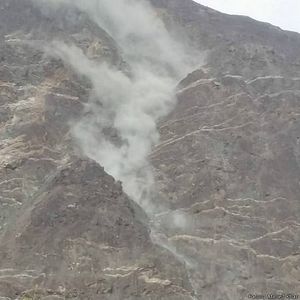On Monday, an earthquake measuring 7.5 on the moment magnitude scale struck the northeastern Afghan province of Badakhstan, near the remote Hindu Kush mountain range that runs between Afghanistan and Pakistan. According to the Associated Press, as of early Tuesday morning, at least 263 people are confirmed to have been killed while hundreds more have been injured. The earthquake is the second major quake to strike the Himalayan region this year after a 7.8 magnitude earthquake devastated Nepal in April.
Though the epicenter of the earthquake was in Afghanistan, most confirmed fatalities so far are in Pakistan. Afghan casualties may be underreported at this point, however. Pakistani authorities have confirmed more than 200 dead and over 1,000 injured. Meanwhile, Afghan officials have confirmed just 33 dead and more than 200 injured. Two deaths have also been reported in the Indian state of Jammu and Kashmir. The earthquake was felt as far as the Indian capital of New Delhi.
At this point, most observers expect death tolls to rise in both Afghanistan and Pakistan. In 2005, a 7.6 magnitude earthquake hit the Azad Kashmir region of Pakistan, resulting in a death toll of over 75,000 between Afghanistan, Pakistan, and India. This time, however, the epicenter is in a sparsely populated area, possibly sparing a the region from a similarly devastating fate.
Humanitarian organizations, including the Pakistan Red Crescent, the local subsidiary of the International Red Cross, report that Monday’s quake mostly damaged poorly constructed structures made from mud and caused landslides. “What we’re hearing is that a lot of mud houses collapsed, but not huge buildings,” Gorkhmaz Huseynov, the head of the International Federation of Red Cross and Red Crescent Societies in Pakistan, told CNBC.
Depending on the severity of the economic and humanitarian damage caused by this earthquake, political leaders in both Kabul and Islamabad could face unexpected challenges. In Afghanistan, the quake comes at a time of increased political and security instability. As the recent Taliban siege of Kunduz demonstrated, the militants are operating in northern Afghanistan with relative ease and Monday’s earthquake could embolden their will to fight as Afghan security forces and the national army are preoccupied with disaster relief efforts in areas affected by the earthquake.
Meanwhile, in Pakistan, the earthquake could challenge the already frail political situation of Prime Minister Nawaz Sharif. The northwestern Pakistani province of Khyber Pakhtunkhwa (KPK), where damage from Monday’s earthquake is already severe, is governed by a chief minister from Pakistan Tehreek-e-Insaaf, the Imran Khan-led political party that led protests against Sharif in mid-2014. Perceptions of Islamabad’s insensitivity to the needs of KPK, particularly in the wake of this earthquake, could lead to renewed political instability in Pakistan.

































